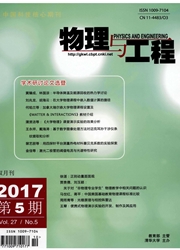

 中文摘要:
中文摘要:
目的评价螺旋CT增强联合动脉造影对肝海绵状血管瘤(CHL)介入治疗术前方法选择、术后疗效评价的指导意义。方法确诊CAL患者36例,共83个病灶纳入研究。对比不同分型肝血管瘤介入治疗后瘤体缩小率差异,探讨两种分型方法与栓塞治疗疗效间的关系,总结其应用价值。结果 CT强化特点符合高流量的18例(50%),中等流量15例(41.7%),低流量3例(0.08%)。动脉造影符合富血型20例(55.6%),乏血型11例(31%),动静脉分流型(AVS)5例(13.9%),无门静脉供血型。36例患者经栓塞治疗后平均瘤体缩小率54.8%,其中富血型瘤体缩小率63.3%,而乏血型21.4%,AVS型57.6%。高流量瘤体缩小率76.2%,中等流量瘤体缩小率53.2%,低流量20.1%,各型间瘤体缩小率差异有统计学意义(P〈0.05);富血型和AVS型均较乏血型为高,差异有统计学意义(P〈0.05),高流量和中等流量均较低流量为高(P〈0.05)。结论 CHL的CT多期扫描联合动脉造影术前准确分型,对治疗方法的选择和术后疗效评估有重要的指导意义。
 英文摘要:
英文摘要:
Objective To evaluate the blood supply of the hepatic cavernous hemangioma using CT scan and CT angiography,in order to conduct the clinical interventional therapy and evaluate prospective efficacy of transcatheter arterial embolization. Methods 36 cases which including 83 lesions were enrolled in this study. All patients were diagnosed by CT scan and CT angiography. There were three types of hepatic cavernous hemangioma determined by CT enhancing scan: rapid enhancement,moderate speed enhancement and slow enhancement. Arteriographic manifestation of CHL could be classified into hypervascular staining,hypovascular staining,arteriovenous shunt and feeding by portal vein. All patients were treated by intra- arterial sclerosing embolization using pingyangmycin- lipiodol emulsion( PLE- IASE). Patients were followed by evaluating symptoms,long- term complication and diameter for lesion after embolization. Results According to CT enhancing scan,18 cases were rapid enhancement( 50%),15 cases were moderate speed enhancement( 41. 7%),3 cases were slow speed enhancement( 0. 08%). According to CT angiography,20 cases were hypervascular staining( 55. 6%),11 cases were hypovascular staining( 31%),5 cases were arteriovenous shunt( 13.9%). The average reduced diameter of lesion after embolization were 54.8%,among them, 63. 6% were rapid enhancement,21. 4% were moderate speed enhancement and 57. 6% were slow speed enhancement according to CT enhancing scan classification. 76. 2% were hypervascular staining,53. 2% were hypovascular staining and 20. 1% were arteriovenous shunt according to CT angiography classification. There were significant differences between all types of classification( P 0. 05). There was significant difference in the SCHL minification between hypervascular lesion and that of with AVS( P 0. 05). Conclusion CT enhancing scan combining with CT angiography is effective on interventional therapy of hepatic caveronous hemangioma.
 同期刊论文项目
同期刊论文项目
 同项目期刊论文
同项目期刊论文
 期刊信息
期刊信息
